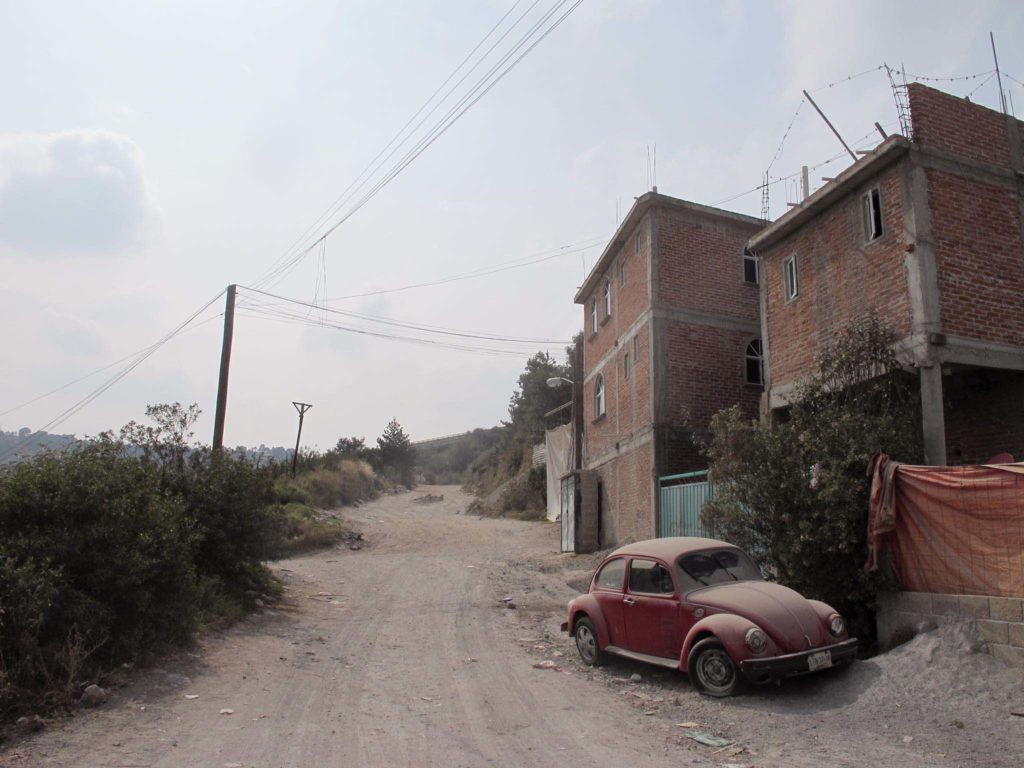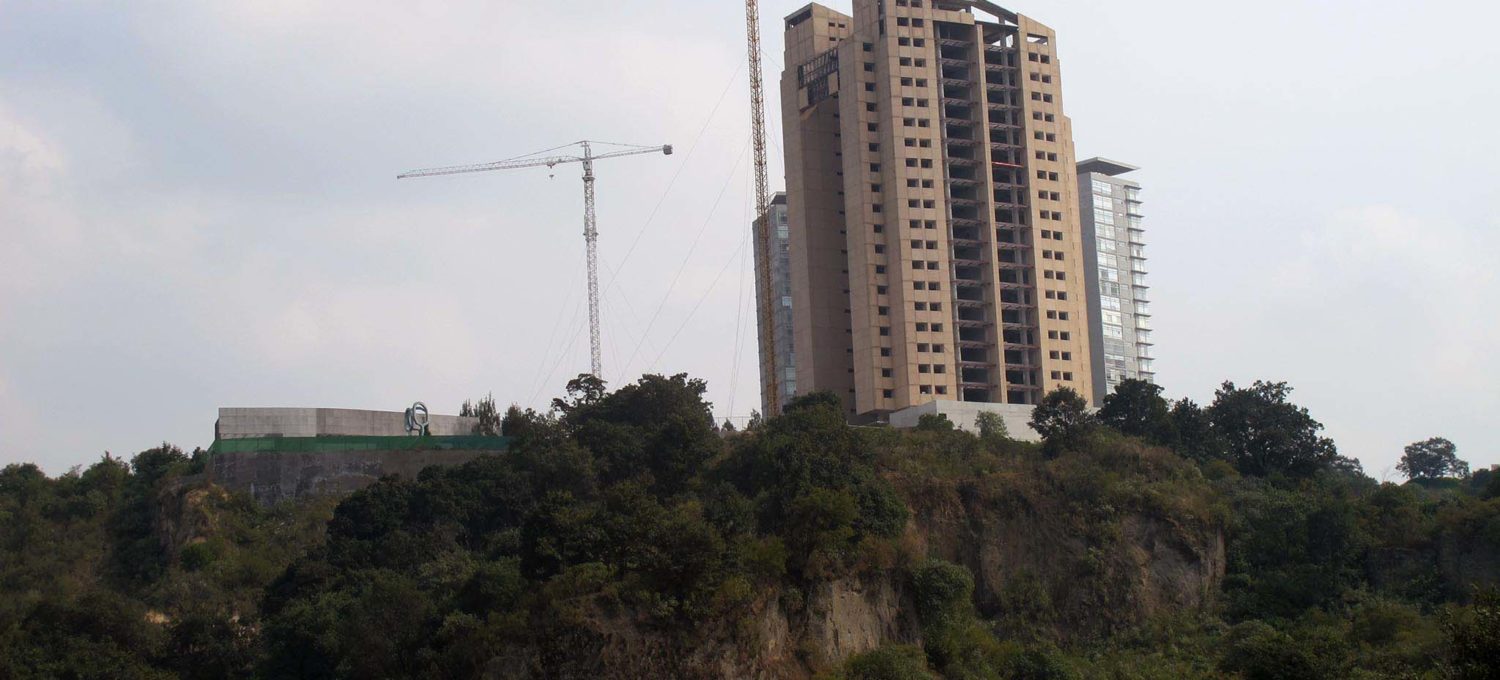There is nothing so uncomfortable to walk on as a toll highway. Cars, buses and trucks rush along your left-hand side, roaring down the pit of your back. Nothing but a white line separates you from 60 meters of sterile black asphalt full of noise and pollution and danger. On your right hand lies a concrete gutter whose slanted slopes are impossible to walk on. Behind that is a meter high metal guard-rail with sharp metal edges, just wide enough to make stepping over it impossible. Behind that there was a fence and the wild.
I was navigating this uncomfortable landscape in the afternoon on the highway Libramiento Chimapa La Quebrada, running over the slope of the western mountain ranges, el Monte Bajo and Monte Alto. Steep ravines and mountainsides rose on my right. Across the highway was the urban rim of Mexico City, luxury housing crawling up to the edge of the highway at this point. A police car braked next to me. They told me that it was illegal to be walking on the road and that I had to get off.
At that moment I was worried about being made to ride in a car since I had accomplished the trip completely on foot so far and wanted to finish it that way. I made quick and abject apologies and counted myself lucky that I was close to an emergency parking space allowing me to escape over dirt roads into the hills beyond.
Among dry grass and pepper trees, rock and dust, I continued along the outer rim of the city. I saw the high futuristic apartment towers of Bosque Real rise up on the edge. The last time I had been here they had been engulfed in eight story high clouds of swirling dust. I had imagined myself in a blue linen coat and white slacks opening the window of the luxury apartment on the seventh floor to a mouthful of dust.
As I reached the bottom of a slope I saw a man with sunglasses and a hard hat standing on a small elevation of rocks next to a dirt road winding off up a gully into the hills. He was short but muscular, a little bit overweight, and had a hard unyielding middle-aged face. He wore a white button-down shirt, dark grey slacks and industrial shoes. In his hand he held a clipboard, and stood stock strait like a general. A truck churned up dust with a load of gravel in its cargo loader. He made a mark on a sheet of paper. He looked like an oracle.

You are counting the gravel, I remarked, and asked him where the road went. He said to a gravel quarry close-by. The edge of the city was full of gravel quarries supplying construction sites throughout the city. Some are privately owned, some are owned by villages and they send an incessant stream of trucks into the city. The volcanoes on the edge of the city bear the scars of this mining and there are few completely intact with the sheer cuts and odd lunar shapes of quarries, which even though long abandoned remain completely lifeless.
The man stared out in front of him through his sunglasses. He told me the quarry was privately owned. I remarked that it was a pity that so much of the spectacular landscape of the Valley of Mexico was being destroyed and sold for tens of dollars per ton.
Without changing his expression he agreed.
Eso es la modernidad. The man looked like an imposing somber play-mobile figure. And I was reminded of the dust coming off this quarry swirling up against the shiny luxury apartments of Bosque Real.
I continued my path up the hills. In a copse of trees I came by a large cross near the top of a hill. A few meters further the hill disappeared. It was always disconcerting how abruptly plants would give away to nothing but air as the earth fell away for tens of meters of pure air along the sheer face of a quarry. Vertigo struck as if the ground far below was rushing up towards me.
I peered down over the edge and saw below me a truck moving like a toy car over the red gravel. The further side of the quarry was striped with wide bars of reds and yellows running horizontally across its sheer face. The hill was gone. Though the quarry was visually spectacular it was also terribly complete in its destructiveness. Nothing remained.
Just air.
